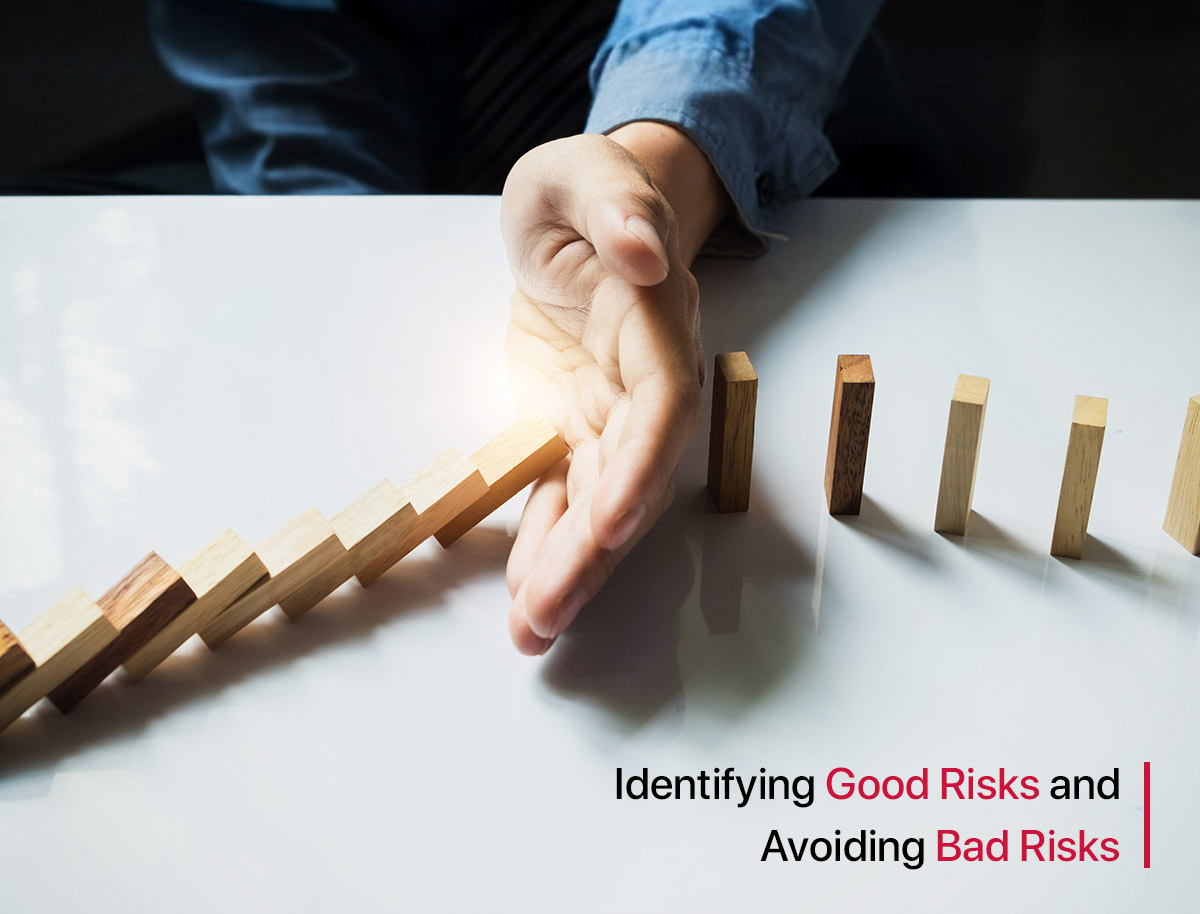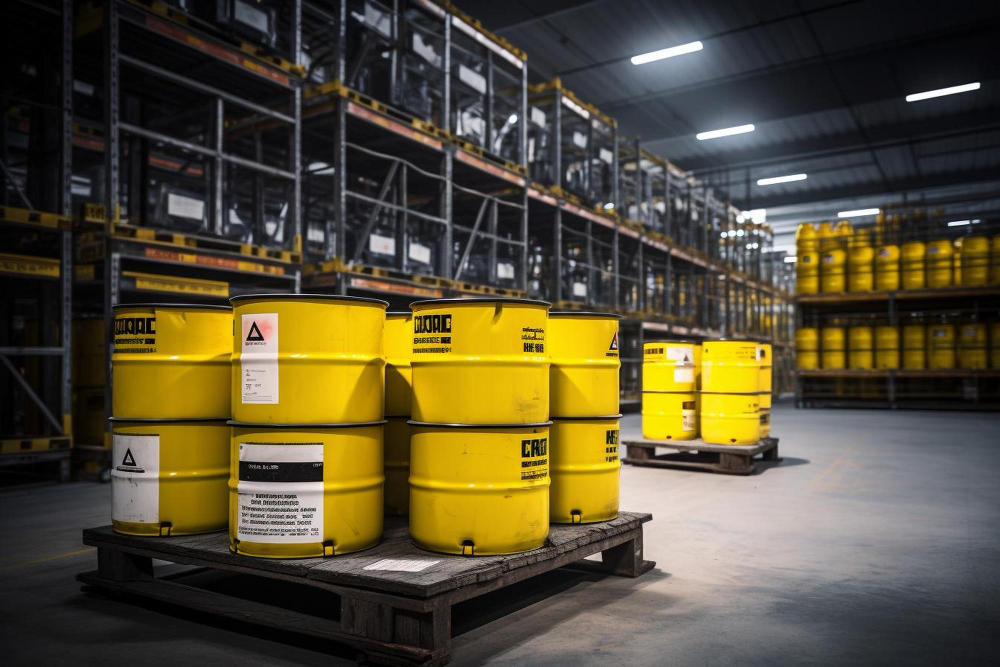

Easy for you to access your insurance policy via our digital platform

Successful businesses balance risk and reward. However, distinguishing between opportunities and threats is crucial. By understanding your risk tolerance and implementing effective risk management strategies, you can protect your business from unforeseen challenges while seizing growth opportunities. Let’s explore how to identify and manage risks to build a resilient enterprise.

Well-Maintained Properties: Good risks are properties that are well-maintained and adhere to high safety and maintenance standards. These properties are less likely to experience loss or damage due to negligence or poor upkeep.
Adherence to Building Codes and Regulations: Properties that comply with building codes, fire safety regulations, and other industry standards pose lower risks. They are less susceptible to structural failures, fire hazards, or other catastrophic events.
Risk Management Practices: Businesses that implement robust risk management practices, such as fire prevention measures, security systems, and emergency response protocols, mitigate the likelihood and severity of potential losses.
Low Claims History: Properties with a low claim’s history demonstrate a track record of minimal losses, indicating lower risk exposure and greater insurability.

High-Risk Industries: Properties operating in high-risk industries such as chemical manufacturing, oil refineries, or hazardous material storage facilities pose greater risks due to the inherent dangers associated with their operations.
Poor Maintenance and Safety Practices: Properties with a history of poor maintenance, lax safety protocols, or non-compliance with regulations are considered bad risks. They are more prone to accidents, breakdowns, and losses.
Location-Based Risks: Properties located in areas prone to natural disasters, such as floodplains, earthquake zones, or hurricane-prone regions, are inherently riskier and may result in higher claims frequency and severity.
Financial Instability: Insureds with financial instability, liquidity issues, or a history of late premium payments may pose higher risks. They may prioritize cost-cutting measures over risk management, leading to increased exposure to losses.
High Claims History: Properties with a significant claim’s history, including frequent or large-scale losses, indicate a higher risk profile. Insurers may perceive these properties as liabilities with elevated risk levels.
We understand the challenges you face. That’s why we offers tailored solutions to protect your business. Let’s work together to identify potential risks and build a resilient future.
Schedule a convenient appointment today. Our team of experts is ready to assist you.
AYA SOMPO Insurance – Your Partner for Life
Receive resources & tools that can help you prepare for the future. You can cancel anytime.
Health Bonus
Up to 10% of renewal premium from the first renewal year onward if no claim is made in the previous year
| Renewal Period | First Year | Second Year Onward |
| Health Bonus % | 10% | 5% |
Choose from the following types of AYA Health Standard Plans to suit your needs!
AYA Health Plus
AYA Health Pro
AYA Health Prestige
AYA Health Prime
We also provide corporate customers with versatile health insurance solutions as Cafeteria Plan, meticulously customized to align perfectly with your unique needs. Regarding the purchase of the Cafeteria Plan, only the rules, regulations, and decisions of AYA SOMPO Insurance Co.,Ltd are considered final.
| Table of Benefits (in MMK) | AYA HEALTH | |||
|---|---|---|---|---|
| PLUS | PRO | PRESTIGE | PRIME | |
| Maximum Benefit PRIME Plan only : Additional Limit of up to 44,000,000 MMK, applies to Thailand Zone |
11,000,000 | 11,000,000 | 11,000,000 | 11,000,000 |
| Medical and Hospital Benefits | Benefits up to | Benefits up to | Benefits up to | Benefits up to |
| Ambulance Services | 165,000 | 165,000 | 165,000 | 165,000 |
|
Hospitalization Costs
|
Full Refund | Full Refund | Full Refund | Full Refund |
|
|
|
|
|
| Chronic Conditions | ||||
|
|
|
|
|
|
|
|
|
|
Maternity Cover (10 Months Waiting Period)
|
Nil | Nil | Nil | 1,100,000 |
| Thailand Zone | ||||
|
Nil | Nil | Nil | 44,000,000 |
|
|
|||
|
|
|||
|
|
|||
| Outpatient Benefits | Benefits up to | Benefits up to | Benefits up to | Benefits up to |
| Physicians fees, Prescription Drugs and Dressings Specialist and Consultant Fees Diagnostic tests, medical scanning and imagery services |
220,000 | 440,000 | 660,000 | 660,000 |
Optical Care
|
Nil | Nil | Nil | 220,000 |
| Dental Care Benefits | Benefits up to | Benefits up to | Benefits up to | Benefits up to |
Dental Treatment Dental Surgery |
Nil | Nil | Nil | 220,000 |
| Personal Accident Benefits | Benefits up to | Benefits up to | Benefits up to | Benefits up to |
Accidental Death Loss of Sight or Loss of Limb Permanent Total Disablement |
11,000,000 | 11,000,000 | 11,000,000 | 11,000,000 |
